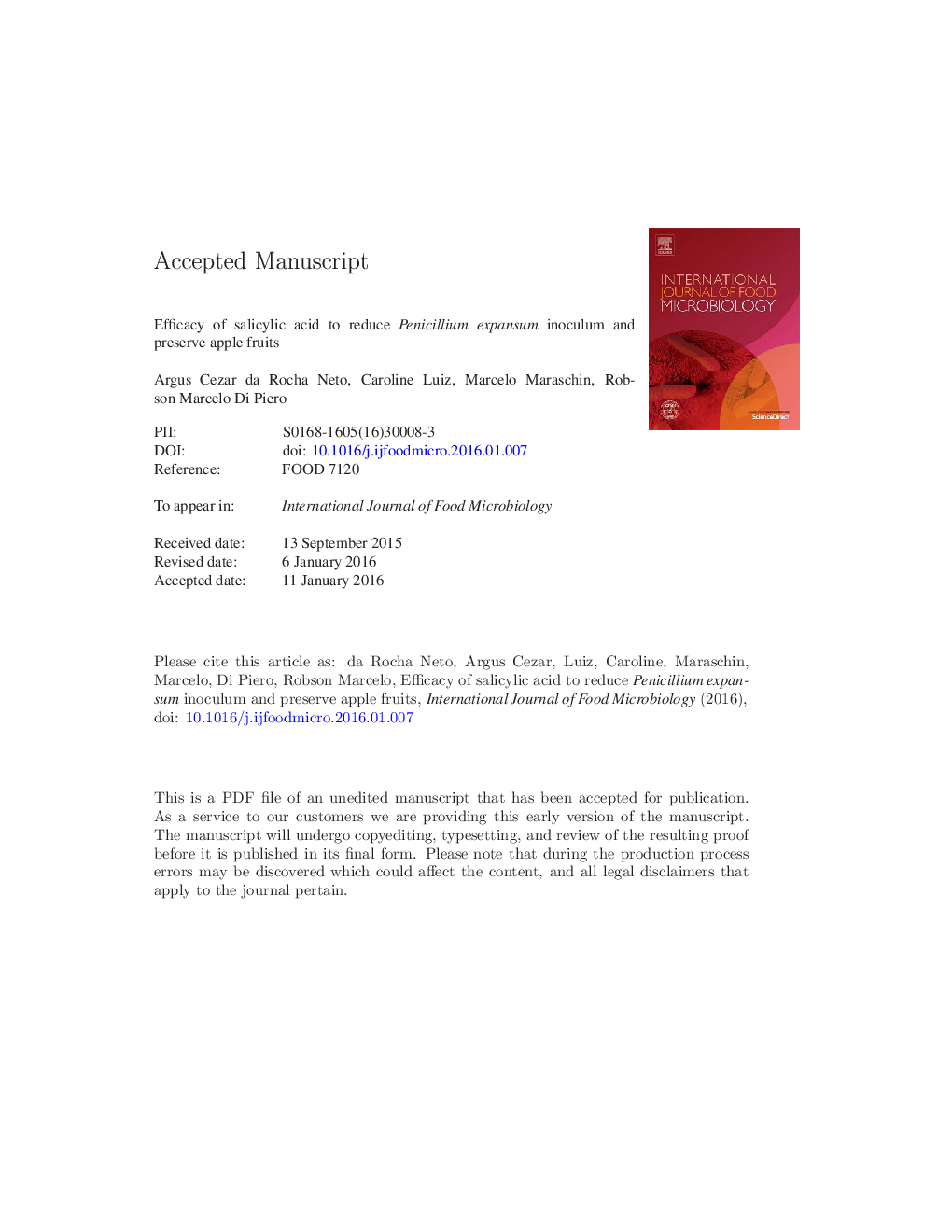| Article ID | Journal | Published Year | Pages | File Type |
|---|---|---|---|---|
| 6289809 | International Journal of Food Microbiology | 2016 | 27 Pages |
Abstract
Apples are among the most commonly consumed fruits worldwide. Blue mold (Penicillium expansum) is one of the major diseases in apples postharvest, leading to wide use of fungicides and the search for alternative products to control the pathogen. In this context, this study aimed to evaluate the potential of salicylic acid (SA) as an alternative product to control blue mold and to preserve the physicochemical characteristics of apple fruit postharvest. The antimicrobial effect of SA was determined both in vitro and in situ, by directly exposing conidia to solutions of different concentrations SA or by inoculating the fruit with P. expansum and treating them curatively, eradicatively, or preventively with a 2.5Â mM SA solution. The physiological effects of SA on fruit were determined by quantifying the weight loss, total soluble solids content, and titratable acidity. In addition, the accumulation of SA in the fruit was determined by HPLC. SA (2.5Â mM) inhibited 100% of fungal germination in vitro and also controlled blue mold in situ when applied eradicatively. In addition, HPLC analysis demonstrated that SA did not persist in apple fruit. SA also maintained the physicochemical characteristics of fruit of different quality categories. Thus, SA may be an alternative to the commercial fungicides currently used against P. expansum.
Related Topics
Life Sciences
Agricultural and Biological Sciences
Food Science
Authors
Argus Cezar da Rocha Neto, Caroline Luiz, Marcelo Maraschin, Robson Marcelo Di Piero,
